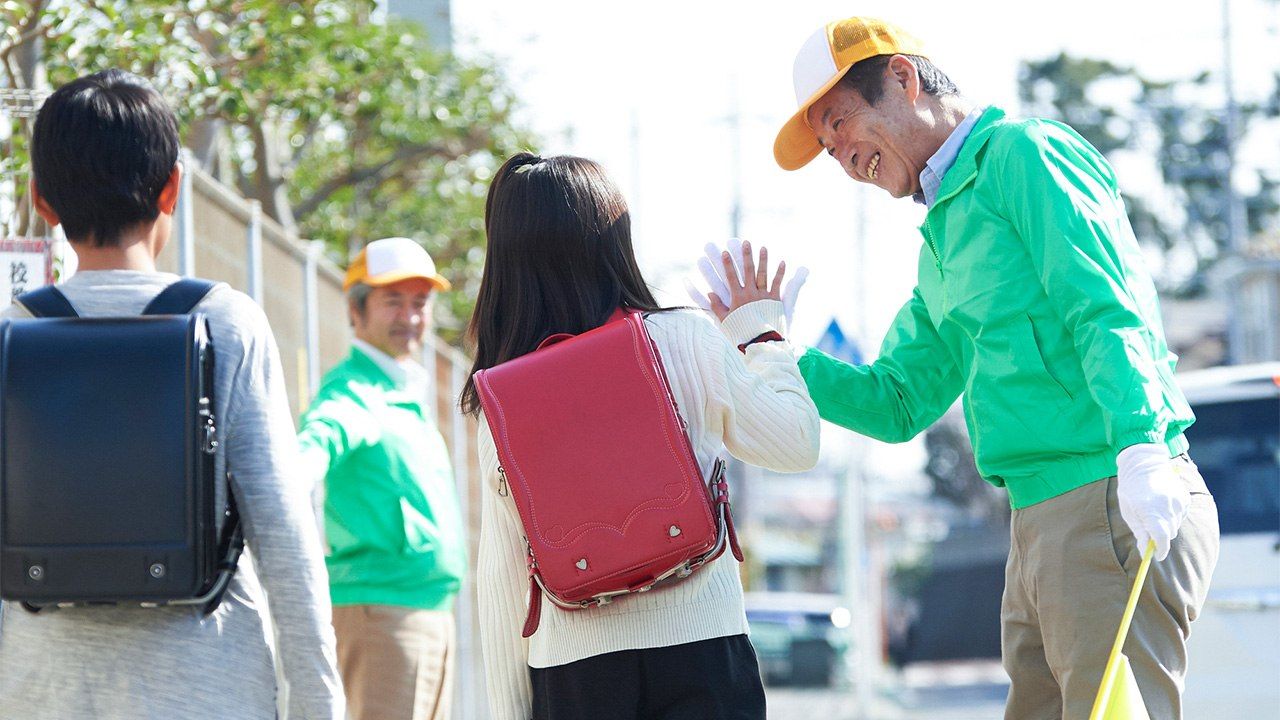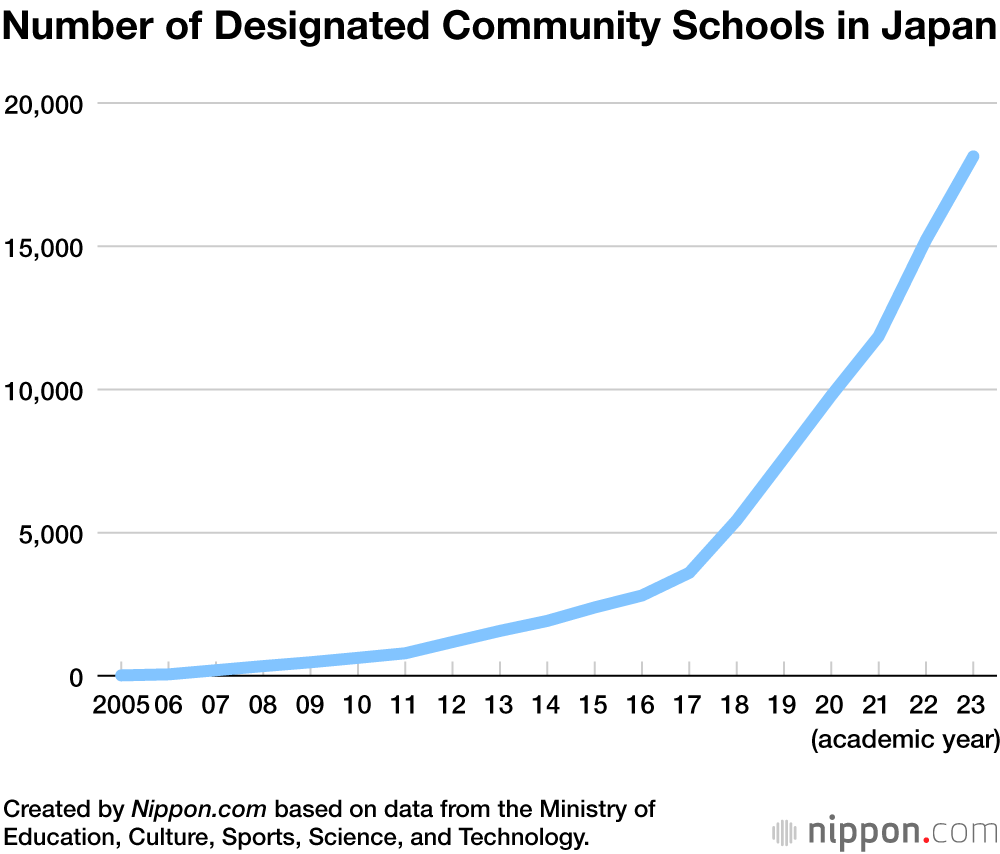
Rise in Community Schools Sees Local Areas Supporting Public Education in Japan
Society Education- English
- 日本語
- 简体字
- 繁體字
- Français
- Español
- العربية
- Русский
As of May 1, 2023, according to a survey by the Ministry of Education, Culture, Sports, Science, and Technology, the number of public elementary, junior high, and high schools designated as community schools (locally managed schools) stood at 18,135. This was an increase of 2,914 schools within the past year. It means 52.3% of the 34,687 public schools across Japan have now implemented this system.
Looking at implementation by type of school, there were 341 kindergartens (a ratio of 14.0%), 10,812 elementary schools (58.6%), 5,167 junior high schools (57.3%), 152 compulsory education (integrated elementary and junior high) schools (75.2%), 1,144 high schools (33.2%), 8 secondary education (integrated junior high and high) schools (22.9%), and 511 special needs schools (45.7%).
Implementation of Community Schools by Type of School (as of May 2023)
| Number of Schools | Implementation Ratio | |
|---|---|---|
| Kindergartens | 341 (+16) | 14.0% |
| Elementary schools | 10,832 (+1,691) | 58.6% |
| Junior high schools | 5,167 (+880) | 57.3% |
| Compulsory education schools | 152 (+41) | 75.2% |
| High school | 1,144 (+169) | 33.2% |
| Secondary education schools | 8 (+1) | 22.9% |
| Special needs schools | 511 (+116) | 45.7% |
| Total | 18,135 (+2,914) | 52.3% |
Created by Nippon.com based on data from the Ministry of Education, Culture, Sports, Science, and Technology. Numbers in parentheses indicate the year-on-year increase.
A community school is one where a school management council is set up including parents and local residents as members so as to reflect the views of the local community. The community school system was established in 2004 when the Act on Local Educational Administration was revised. The number of community schools has significantly increased from 2017 onward, when it became mandatory for boards of education to make efforts to establish such a system and, as of May 2023, an average of 74.3% of local authorities had done so.
A significant example is the city of Asakuchi, Okayama Prefecture, where the system was used to “take stock” of school operations, aiming to bring about changes in teachers’ working styles and other reforms. In-depth discussions were held among faculty, parents, and local residents, after which they considered scrapping or simplifying certain operations. This resulted in the overtime hours per day worked by teachers in June 2018 decreasing by nearly 30% compared to the same month the previous year.
In another example with Shōbarajitsugyō High School in Hiroshima Prefecture, representatives from the Shōbara municipal government, the city’s elementary and junior high schools, agricultural cooperatives, Chamber of Commerce and Industry, and the Prefectural University of Hiroshima all participate in planning on the school management council. The curriculum is systematically implemented in collaboration and cooperation with industry, academia, and government. This includes provision of support for practical training and “identification and research of local issues,” as well as dispatch of teachers knowledgeable in the latest technology.
(Translated from Japanese. Banner photo © Pixta.)
